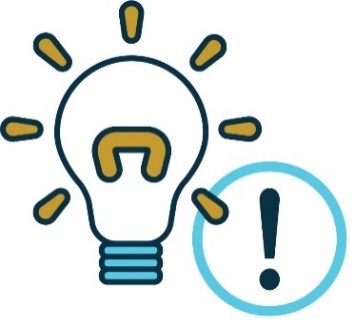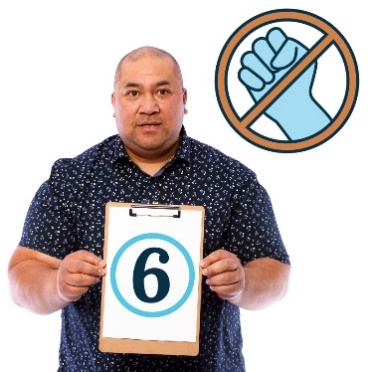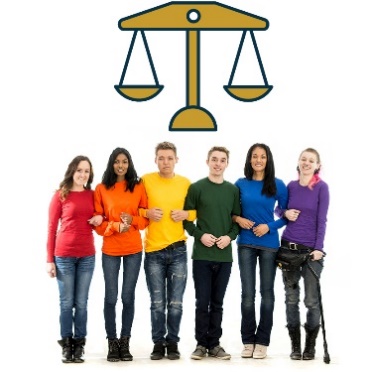Our principles
| Principles are important ideas we need to work on to reach our goal. |
| Our Plan has 6 principles. They will help us work together to end violence against women and children. |
1. Gender equality
| We will have gender equality when people in Australia believe all genders are equal. Your gender is what you feel and understand about who you are as a person. It isn’t about whether your body looks male or female. |
| Gender equality is a big part of ending violence against women and children. Violence happens more often when women are not treated equally. |
For example, when: | |
|
|
|
|
2. Lived experience
People with lived experience of violence: | |
|
|
|
|
|
|
| People with lived experience are an important part of making our Plan. |
| They might have used support services before. So they know what we can do better. |
| We must include people with lived experience when we:
|
3. Closing the Gap
| Governments must work with Aboriginal and Torres Strait Islander peoples to end violence against women. |
Aboriginal and Torres Strait Islander peoples know the best way to: | |
|
|
|
|
| They also know the best way to provide services for Aboriginal and Torres Strait Islander peoples. |
| The Australian Government wrote a plan for how to work with Aboriginal and Torres Strait Islander peoples. It’s called ‘Closing the Gap’. Our Plan will work to support these Closing the Gap goals. |
4. Focusing on what each person needs
| Support services must think about what is best for each person when they experience violence. They must focus on what each person wants. |
| Different services must work together to support women and children who experience violence. They must share information about what support works well. |
| This includes government services and community organisations. |
| These services must work well across a person’s whole life to help them. And they must not make things harder for them. |
5. Intersectionality
| Some people are treated differently because of:
|
| When people are treated differently because of more than one thing about them, we call it intersectionality. For example, if they are a woman and they have a disability. |
| Women who experience intersectionality are more likely to experience violence. And they’re less likely to get support. |
| We must work with these women to understand:
|
| We explain more about intersectionality in Part 2 of our Plan. You can find it on our website. |
6. Making the right people responsible for their choices
| Violence against women and children won’t stop unless we focus on the people who use violence. |
| People who use violence must be responsible for their behaviour. It’s their job to stop using violence. It’s never the fault of the person who experienced violence. |
| Most violence against women doesn’t just happen once. It happens over a period of time. |
| The courts and law must work together to recognise violence that happens over a long time, like coercive control. |
| The courts and law must also protect people who experience violence. |
Our principles
| Principles are important ideas we need to work on to reach our goal. |
| Our Plan has 6 principles. They will help us work together to end violence against women and children. |
1. Gender equality
| We will have gender equality when people in Australia believe all genders are equal. Your gender is what you feel and understand about who you are as a person. It isn’t about whether your body looks male or female. |
| Gender equality is a big part of ending violence against women and children. Violence happens more often when women are not treated equally. |
For example, when: | |
|
|
|
|
2. Lived experience
People with lived experience of violence: | |
|
|
|
|
|
|
| People with lived experience are an important part of making our Plan. |
| They might have used support services before. So they know what we can do better. |
| We must include people with lived experience when we:
|
3. Closing the Gap
| Governments must work with Aboriginal and Torres Strait Islander peoples to end violence against women. |
Aboriginal and Torres Strait Islander peoples know the best way to: | |
|
|
|
|
| They also know the best way to provide services for Aboriginal and Torres Strait Islander peoples. |
| The Australian Government wrote a plan for how to work with Aboriginal and Torres Strait Islander peoples. It’s called ‘Closing the Gap’. Our Plan will work to support these Closing the Gap goals. |
4. Focusing on what each person needs
| Support services must think about what is best for each person when they experience violence. They must focus on what each person wants. |
| Different services must work together to support women and children who experience violence. They must share information about what support works well. |
| This includes government services and community organisations. |
| These services must work well across a person’s whole life to help them. And they must not make things harder for them. |
5. Intersectionality
| Some people are treated differently because of:
|
| When people are treated differently because of more than one thing about them, we call it intersectionality. For example, if they are a woman and they have a disability. |
| Women who experience intersectionality are more likely to experience violence. And they’re less likely to get support. |
| We must work with these women to understand:
|
| We explain more about intersectionality in Part 2 of our Plan. You can find it on our website. |
6. Making the right people responsible for their choices
| Violence against women and children won’t stop unless we focus on the people who use violence. |
| People who use violence must be responsible for their behaviour. It’s their job to stop using violence. It’s never the fault of the person who experienced violence. |
| Most violence against women doesn’t just happen once. It happens over a period of time. |
| The courts and law must work together to recognise violence that happens over a long time, like coercive control. |
| The courts and law must also protect people who experience violence. |






























